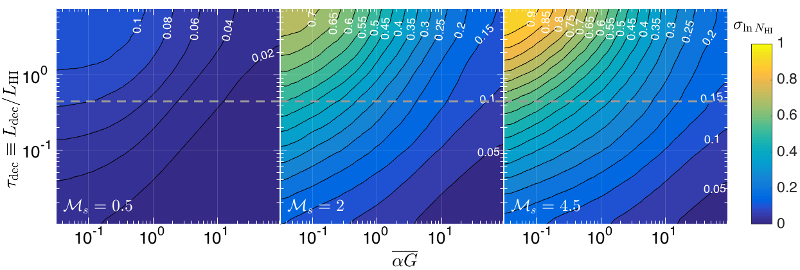| EPoS Contribution |
|
The HI-to-H2 Transition in a Turbulent Medium
Shmuel Bialy TAU, Tel Aviv, IL | |
| Understanding the atomic-to-molecular (HI-to-H2) transition is of fundamental importance for the theory of star-formation and the evolution of galaxies. I will discuss our recent theory of the HI-to-H2 transition in the turbulent interstellar medium. The turbulence, when supersonic, produces strong density fluctuations in the gas, which strongly affects the HI/H2 structure by varying the density-dependent H2 formation/destruction balance. I will show how 21 cm observations of the atomic gas may be used to constrain important turbulent parameters - the sonic Mach number and the turbulence driving scale. | |
 | |
| Caption: Adopted from Bialy et al. (2017; color figure). The predicted width of the HI column density (NHI) probability distribution function (PDF) for a UV-irradiated cloud with a non-homogeneous density structure. The relative s.t.d., σln NHI, increases with the sonic Mach number, Ms, decreases with the dissociation parameter α G, and increases with the de-correlation-scale to HI-scale ratio, τdec. The latter parameter is further related to the turbulence driving-scale (see Bialy et al. 2017 for details). I will use our model with 21 cm observations toward molecular clouds, to constrain the turbulence driving scale in the Galaxy. | |
| Collaborators: B. Burkhart, CfA, US A. Sternberg, TAU, IL |
Key publication
Suggested Session: Molecular clouds |

